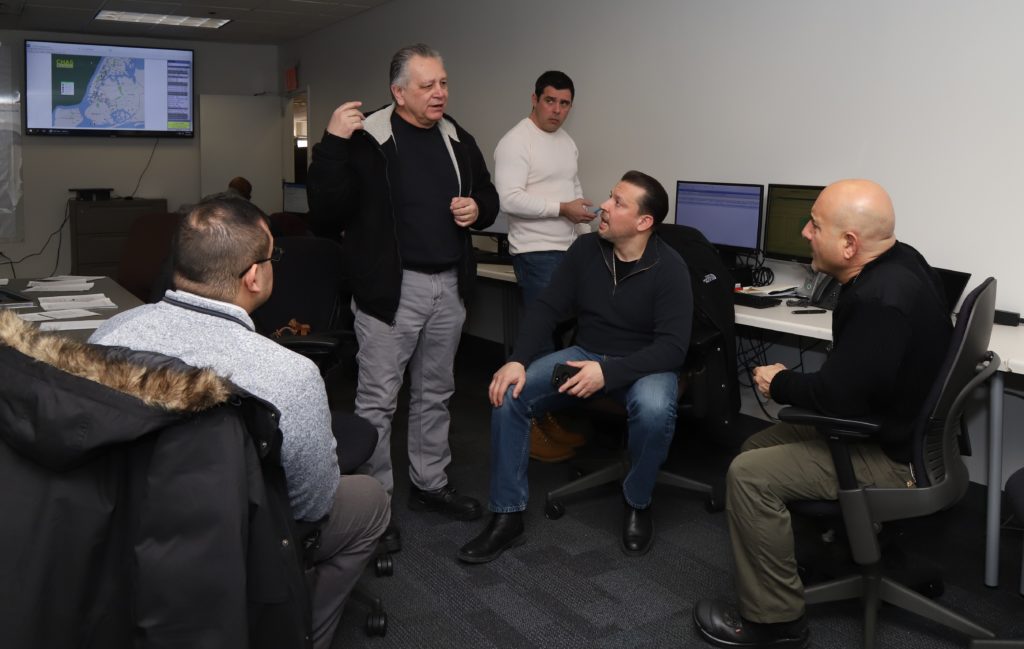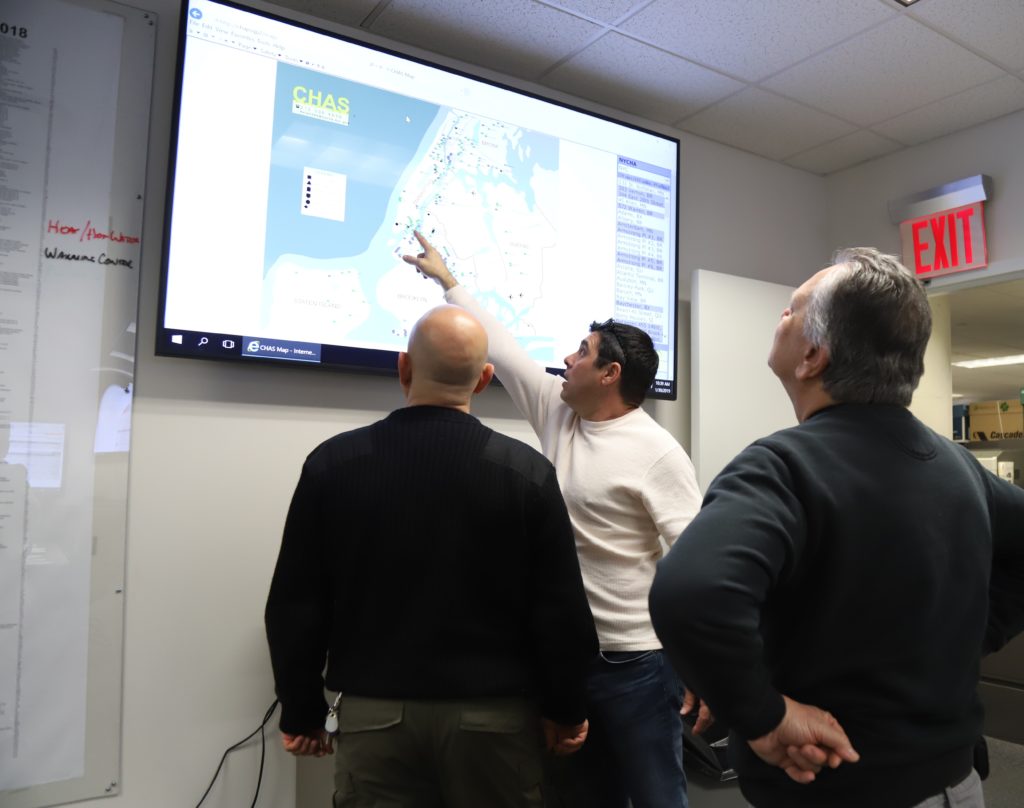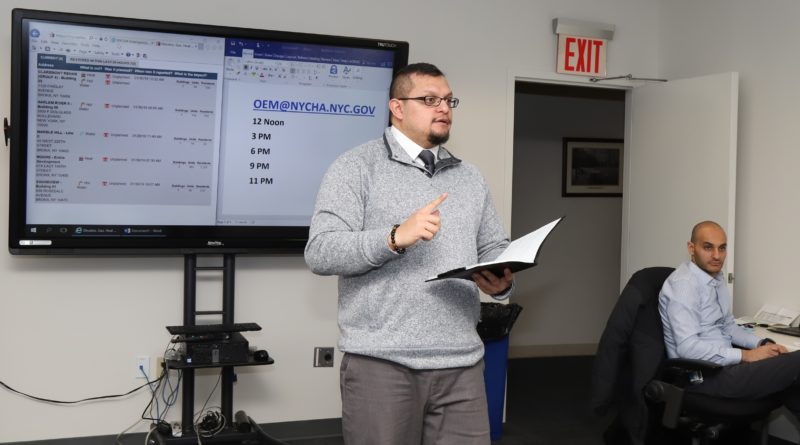NYCHA’s Situation Room: Handling Any Emergency
This past winter season, NYCHA’s Situation Room was activated on 10 separate occasions for extreme cold and snowstorms. NYCHANow spoke with Rudy Murillo, NYCHA’s Director of the Office of Emergency Management (OEM), to learn more about how the Situation Room operates in its mission to help safeguard the Authority’s residents, staff, and property during emergency situations.
What is the Situation Room’s role?
The Situation Room’s provides a space where all key department representatives can sit in the same area to better handle any emergency or situation. Having everyone in the same room allows resources to be easily managed and eliminates the duplication of efforts. It also allows for a better line of communication and gives a platform for senior executive leadership, including the General Manager, to be briefed and understand the full scope of the work being performed.
How does the Situation Room enhance the Authority’s operations and better serve residents?
The Situation Room enables departments to better coordinate with each other to respond effectively to incidents. Brainstorming and decision making become more efficient. Incidents can be prioritized, resources allocated quicker, and information sharing is timelier and more accurate.

When does the Situation Room operate?
It is designed to be staffed and in operation 24/7 every day of the year but is scalable, depending on the incident. There are incidents that would warrant it to be activated only during certain hours. The recent Situation Room activations were from 8 a.m. to midnight, and then Situation Room staffing got scaled back to key departments that continue operations overnight, such as the Heating Management Services Department and the Emergency Services Department (ESD).
Which departments staff the Situation Room?
It’s designed to have a representative from departments such as NYCHA’s Office of Emergency Management (OEM); Operations; Heating Management Services Department; Maintenance, Repair & Skilled Trades; ESD; Technical Services Department; Elevator Service and Repair Department; Department of Communications; Procurement; and the Capital Projects Division.
Do NYCHA employees also staff the City’s Situation Room/Emergency Operations Center, operated by NYC Emergency Management (NYCEM), when needed?
Yes, certain staff – from NYCHA OEM and the Office of Safety and Security – have been trained by NYCEM to be able to staff their Emergency Operations Center. This allows NYCHA to be represented in the City’s emergency response and coordination efforts.
What kind of reports are generated by the Situation Room?
In recent Situation Room activations, NYCHA OEM distributed Situation Reports, which provide a snapshot of the overall operations, every three hours. The Heating team also sent out their status reports every two hours. But these report mechanisms are dictated by the operations and may vary, depending on the incident.
Heat and hot water outages were resolved within an average of 10 hours this season, down from an average of 29 hours during the previous season. How did the Situation Room contribute toward this progress?
The key here was having everyone in the same room coordinating efforts. This collective approach allowed us to look at reports and monitor work orders and potential outages more efficiently.
Any kudos due to particular staff for their efforts?
Definitely – to all the staff who have worked in or supported the Situation Room. We couldn’t have accomplished all the work we did without them. Specifically, the Heating Management Services Department during this past winter season; with minimal staffing and resources and putting in long hours (overtime, weekends, holidays, overnight), they worked extremely hard to restore heat and hot water service interruptions expeditiously. Also, Operations and development staff worked together to ensure that we were able to address work orders in a timely manner for residents.








